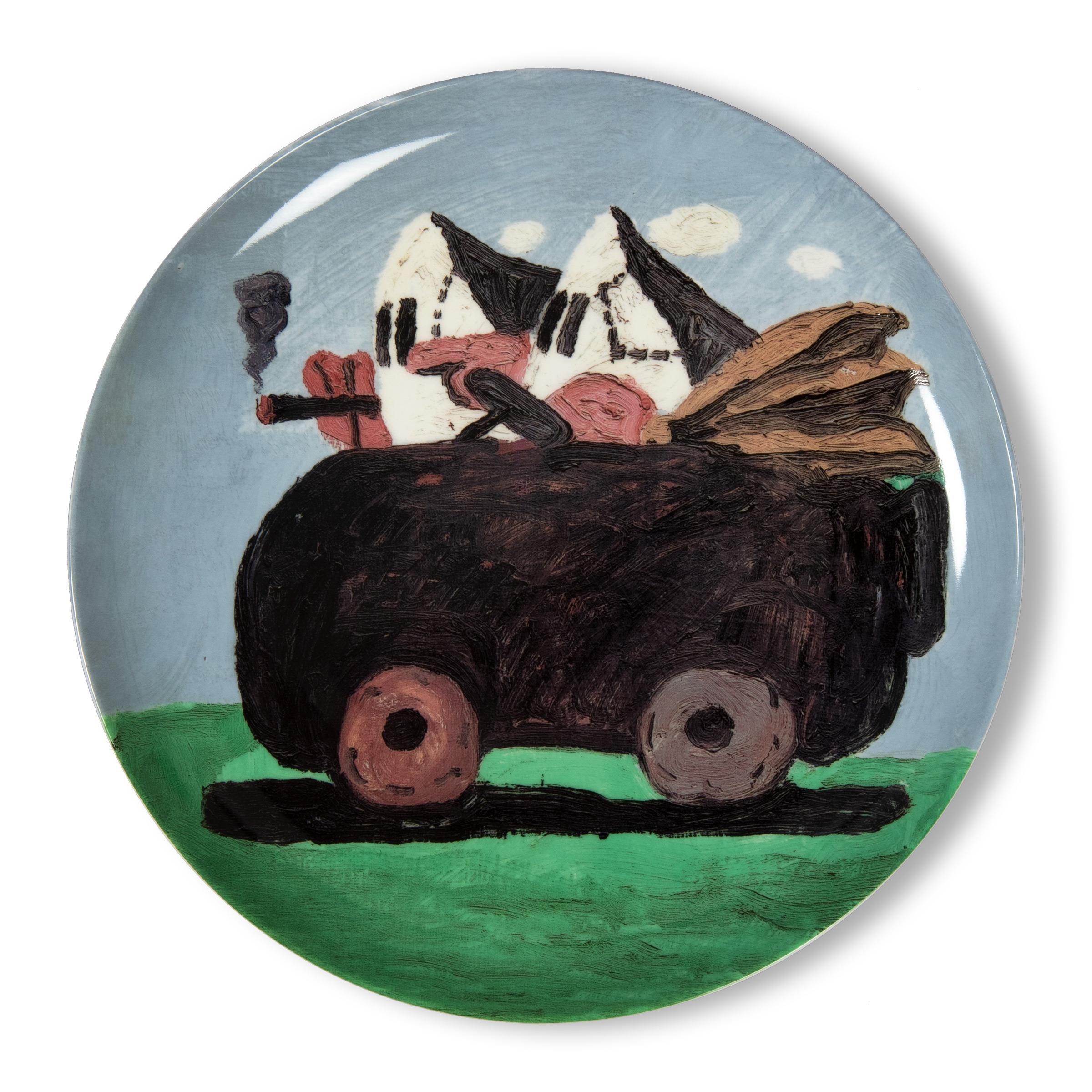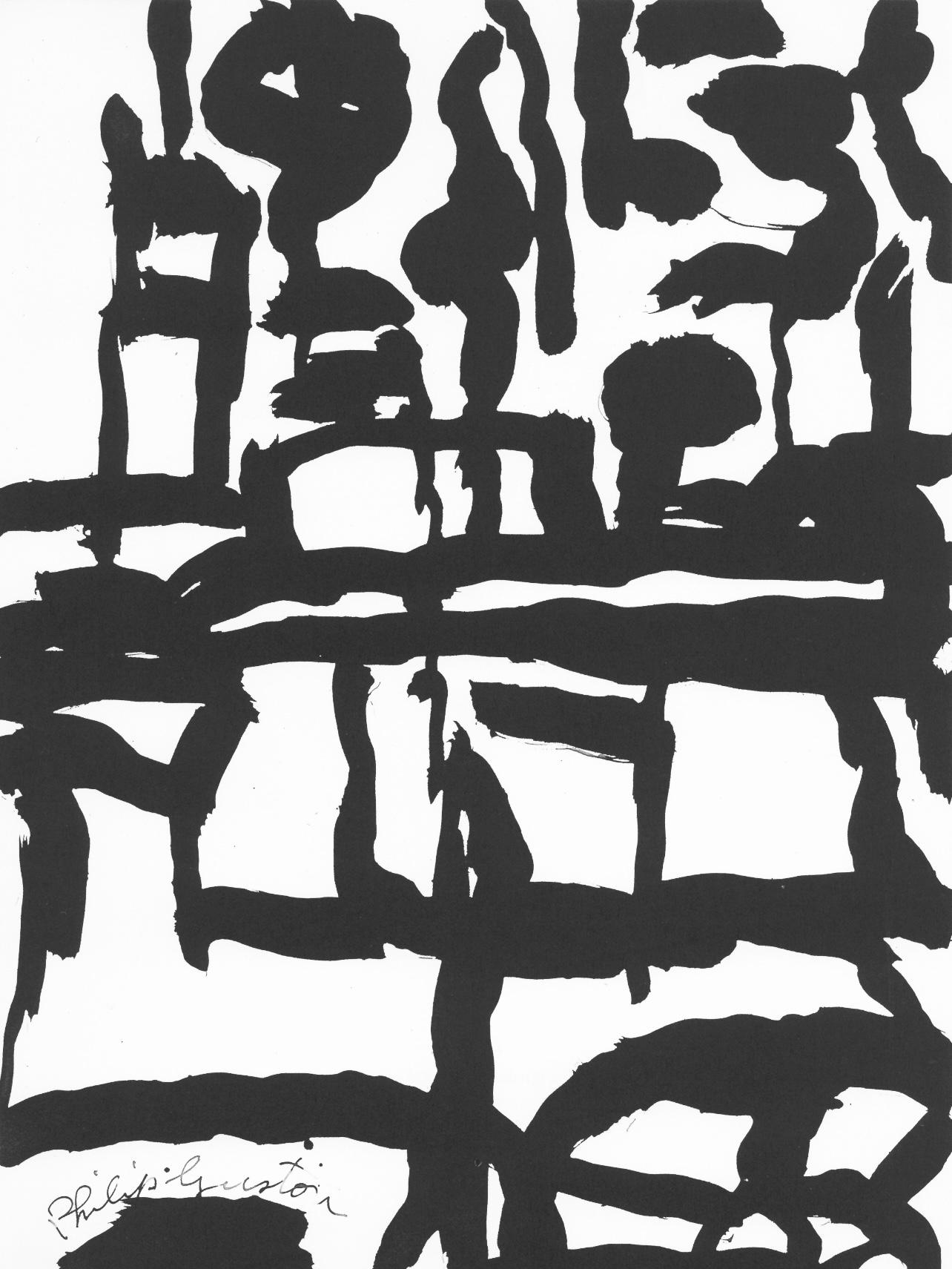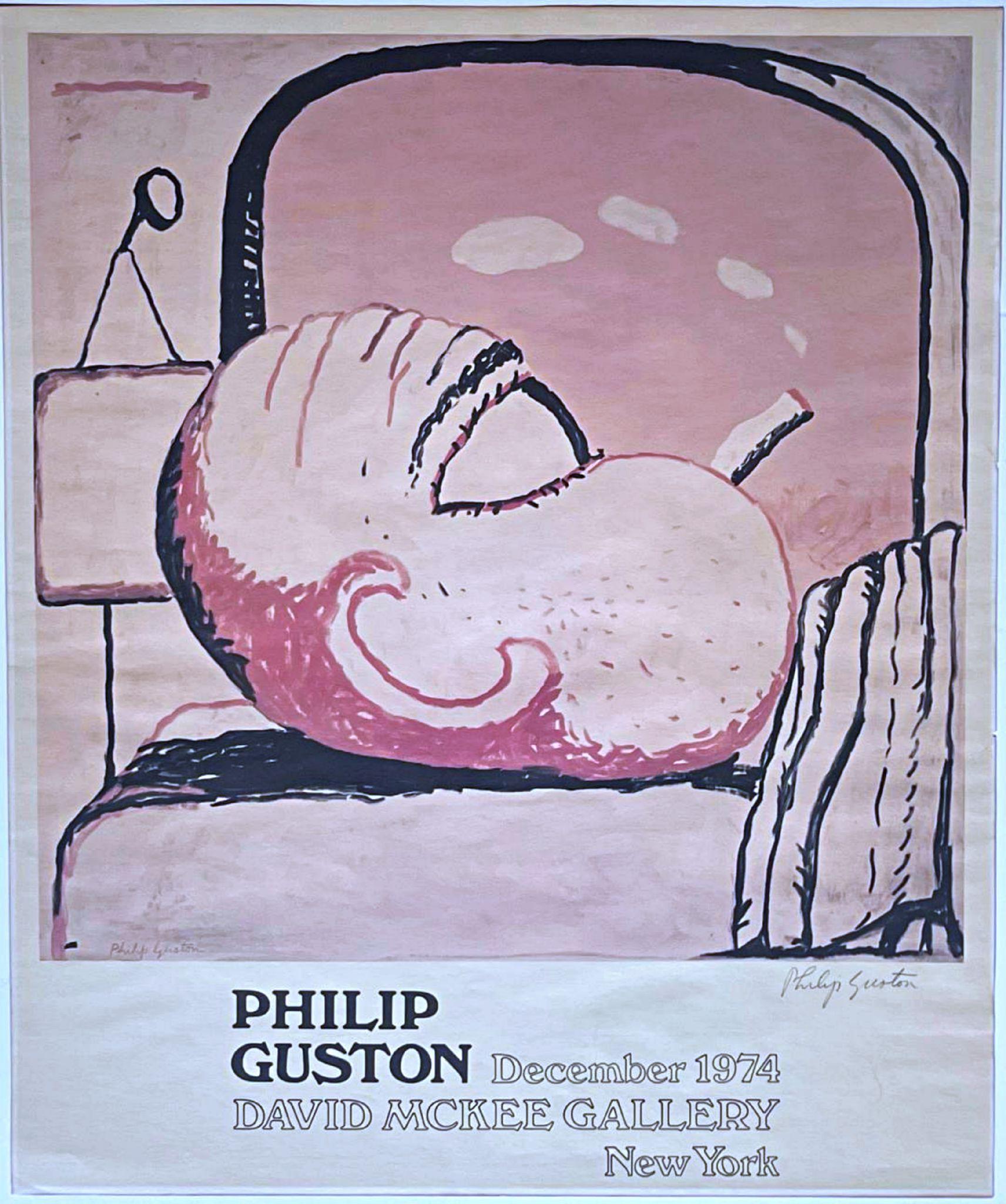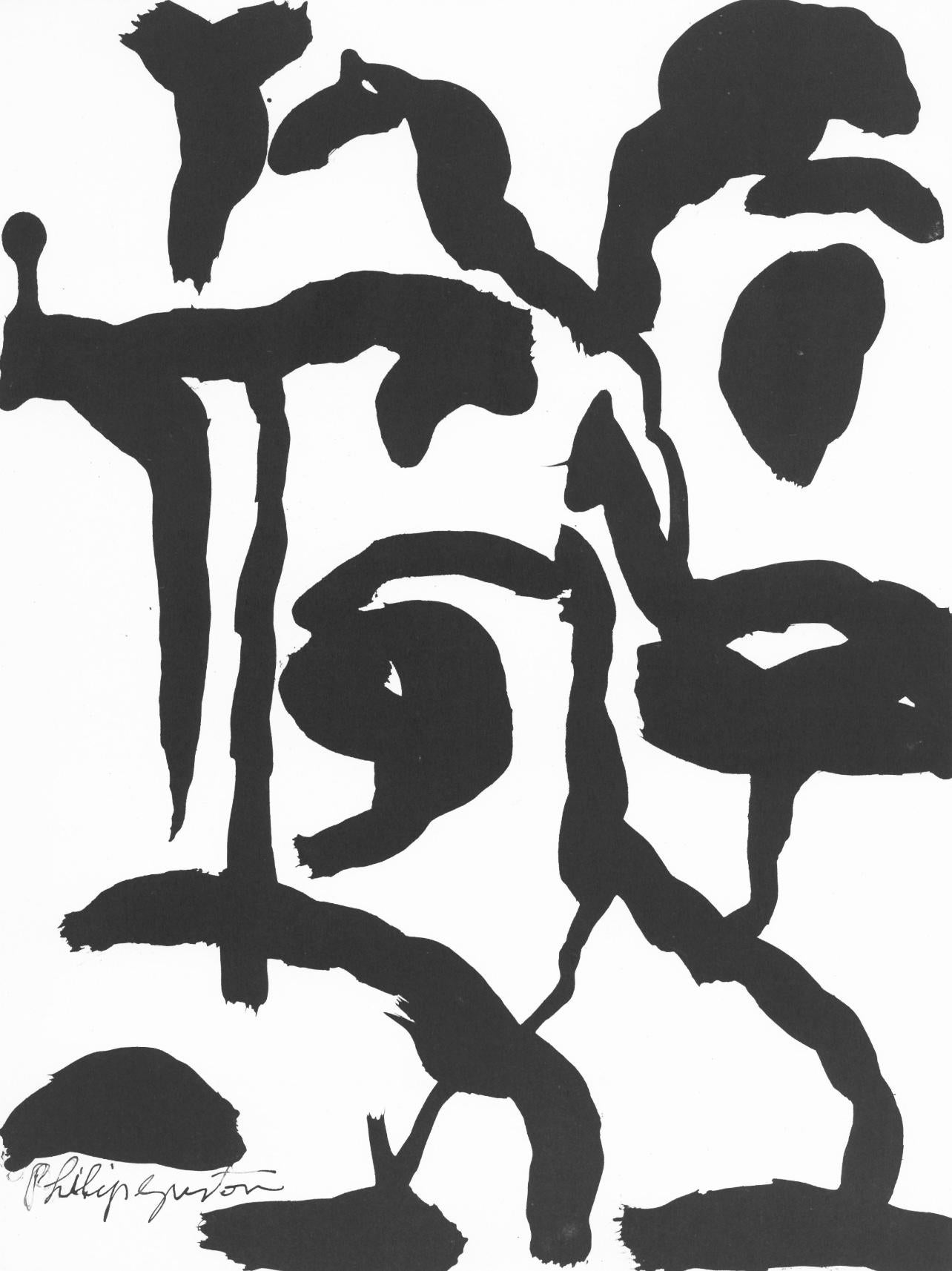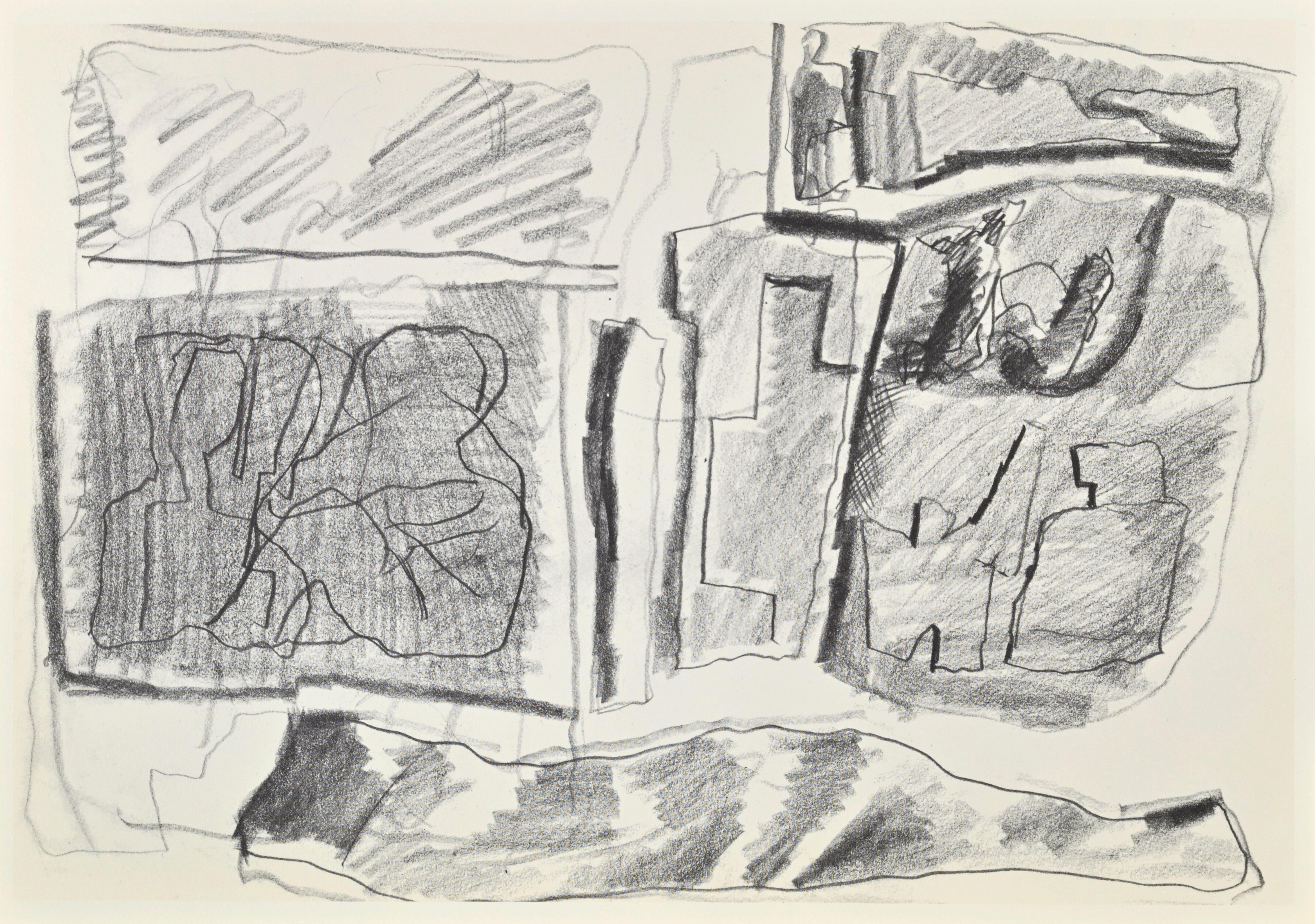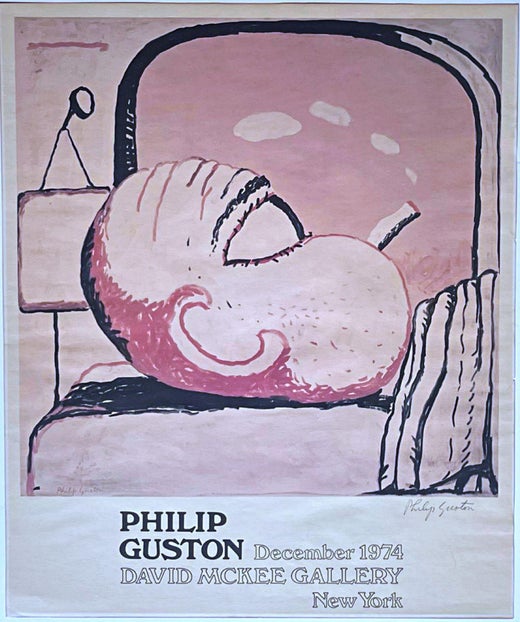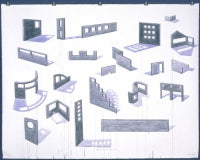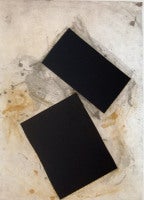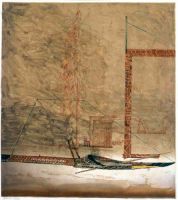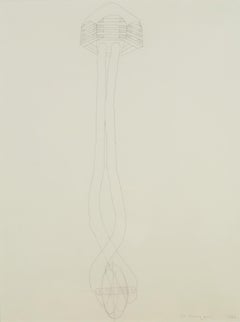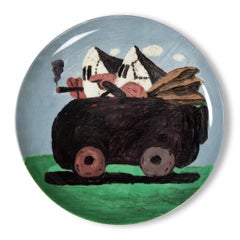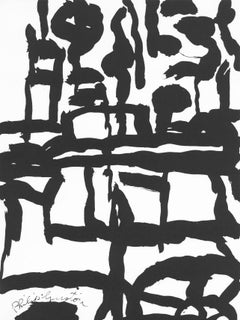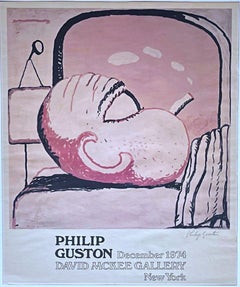Items Similar to Elements
Want more images or videos?
Request additional images or videos from the seller
1 of 4
Philip GustonElements1980
1980
$17,500
£13,276.56
€15,222.36
CA$24,929.79
A$27,054.96
CHF 14,235.16
MX$328,718.50
NOK 178,221.52
SEK 167,811.78
DKK 113,658.46
About the Item
Philip Guston was born in 1913 in Montreal, Canada. He began painting at the age of 12, and in 1927 he enrolled in the Los Angeles Manual Arts High School , where both he and Jackson Pollock studied under Frederick John de St. Vrain Schwankovsky and were introduced to modern European art, oriental philosophy, theosophy and mystic literature.
In the 1950s, Guston achieved success and renown as a first-generation Abstract Expressionist. During this period his paintings often consisted of blocks and masses of gestural strokes and marks of color floating within the picture plane. These works, with marks often grouped toward the center of the compositions, recall the “plus and minus” compositions by Piet Mondrian.
Like many of his contemporaries, Guston spent the years after World War II developing a personal style and vision out of the diverse range of realist and abstract influences that challenged American artists of his era. In the 1940s he constructed a private mythological world in paintings such as Martial Memory (1945; St Louis, MO, A. Mus.) and If this Be Not I (1945; St Louis, MO, Washington U., Gal. A.); in the latter a crowd of children, some masked or with faces partially covered, fill the columned porch of an old dilapidated Midwestern house. It is a night scene, predominantly blue in colour, richly and heavily painted. By 1947–8, when he painted The Tormentors (San Francisco, CA, MOMA), figures have almost disappeared, leaving behind only traces of floorboards, furniture and architecture. In the early 1950s he developed a lyrical abstract style in works such as Dial (1956; New York, Whitney), which towards the end of the decade evolved into single dark images embedded in a morass of grey paint, for example Painter I (1959; Atlanta, GA, High Mus. A.) and New Place (1964; San Francisco, CA, MOMA). His most radical shift came in the late 1960s with works such as Evidence (1970; San Francisco, CA, MOMA), when he confounded the art world with a new figurative style in which blunt cartoon shapes are used to create a personal iconography. Certain images recur in these paintings, such as the soles of shoes (as in Back View, 1977; San Francisco, CA, MOMA) and people’s heads (e.g. Painter in Bed, 1973; London, Saatchi Col.), inhabiting a sort of spare parts world in which the disembodied, separate items have a unique and surrealistic life of their own.
- Creator:Philip Guston (1913 - 1980, American)
- Creation Year:1980
- Dimensions:Height: 33 in (83.82 cm)Width: 43 in (109.22 cm)
- More Editions & Sizes:Edition of 50Price: $17,500
- Medium:
- Movement & Style:
- Period:
- Condition:
- Gallery Location:San Francisco, CA
- Reference Number:Seller: PG80-99871stDibs: LU56324172
Philip Guston
Philip Guston (1913–1980) was an influential American artist whose career evolved from social realism to abstract expressionism and finally to a unique form of figurative painting. Born in Montreal, Canada, to Russian-Jewish immigrant parents, Guston grew up in Los Angeles, where he was introduced to art and politics at a young age. His early years were marked by personal tragedy, including his father’s suicide, an event that profoundly influenced his later work. In the 1930s, Guston began his artistic career as a muralist under the Federal Art Project, inspired by the social realism of Mexican muralists like Diego Rivera. During this time, his work conveyed strong political and social messages, reflecting the struggles of the working class and the political tensions of the era. By the 1940s, Guston moved to New York, where he became associated with the burgeoning Abstract Expressionist movement alongside artists like Jackson Pollock and Willem de Kooning. His abstract works from this period were characterized by lush, painterly surfaces and a focus on emotional resonance. Despite his success as an Abstract Expressionist, Guston grew increasingly dissatisfied with abstraction’s limitations in addressing personal and societal concerns. In the late 1960s, he made a dramatic shift back to representational imagery, a move that shocked the art world. His later works incorporated cartoonish, symbolic figures—hooded Ku Klux Klan-like characters, shoes, lightbulbs, and disembodied heads—depicting themes of existential angst, political corruption, and personal reflection. These provocative images, such as in The Studio (1969), addressed racism, violence, and the complexities of human identity with biting humour and raw emotion. Critics initially derided Guston’s return to figuration, but his bold departure from abstraction ultimately cemented his legacy as a pioneering figure who challenged conventions and explored deeply personal and political themes. His work resonates with an unflinching honesty and continues to influence contemporary artists grappling with societal issues and the human condition. Guston died in 1980, leaving behind a body of work that defies categorization yet remains profoundly impactful. Today, he is celebrated as an artist who pushed boundaries and redefined what painting could be, inspiring generations with his fearless creativity and commitment to authenticity.
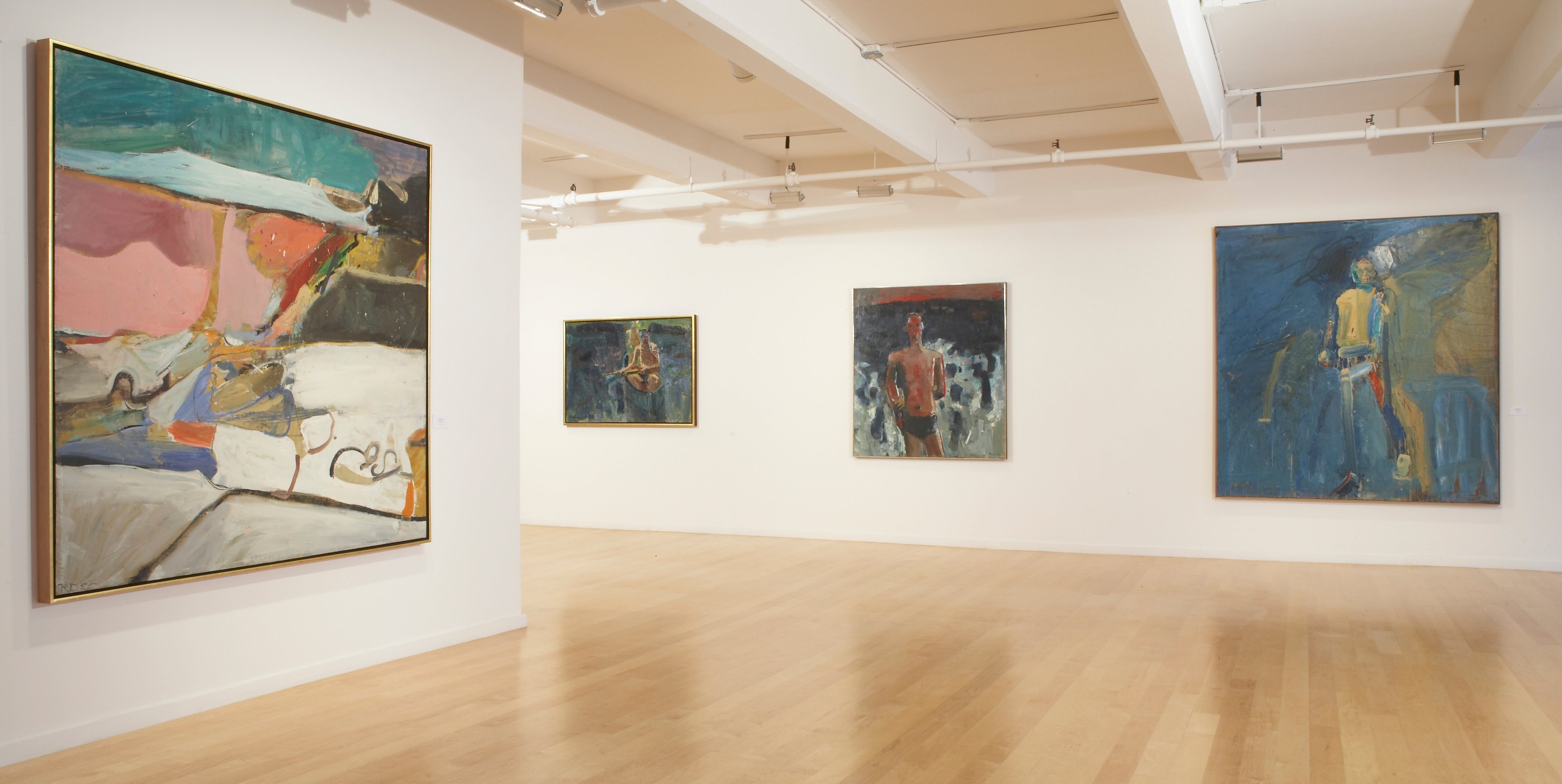
About the Seller
No Reviews Yet
Recognized Seller
These prestigious sellers are industry leaders and represent the highest echelon for item quality and design.
1stDibs seller since 2011
6 sales on 1stDibs
Typical response time: A week
Associations
Art Dealers Association of America
- ShippingRetrieving quote...Shipping from: San Francisco, CA
- Return Policy
Authenticity Guarantee
In the unlikely event there’s an issue with an item’s authenticity, contact us within 1 year for a full refund. DetailsMoney-Back Guarantee
If your item is not as described, is damaged in transit, or does not arrive, contact us within 7 days for a full refund. Details24-Hour Cancellation
You have a 24-hour grace period in which to reconsider your purchase, with no questions asked.Vetted Professional Sellers
Our world-class sellers must adhere to strict standards for service and quality, maintaining the integrity of our listings.Price-Match Guarantee
If you find that a seller listed the same item for a lower price elsewhere, we’ll match it.Trusted Global Delivery
Our best-in-class carrier network provides specialized shipping options worldwide, including custom delivery.More From This Seller
View AllEl Muro #18
By Los Carpinteros
Located in San Francisco, CA
Category
21st Century and Contemporary Still-life Drawings and Watercolors
Materials
Watercolor, Paper
Price Upon Request
Untitled
By Joel Shapiro
Located in San Francisco, CA
Joel Shapiro received his B.A. in 1964, and his M.A. in 1969 from New York University. Since his first solo exhibition in 1970, Shapiro's work has been the subject of more than 160 s...
Category
1990s Abstract Prints and Multiples
Materials
Aquatint
Pessoa's Sleigh II
By Nathan Oliveira
Located in San Francisco, CA
Materials
Monotype
Price Upon Request
Drawing for Sanctuary
By Martin Puryear
Located in San Francisco, CA
Framed: 24 1/2 x 21 5/8 inches
Category
1980s Drawings and Watercolor Paintings
Materials
Pencil
Price Upon Request
Untitled
By Joel Shapiro
Located in San Francisco, CA
Edition of 4
Price Upon Request
Untitled
By Elmer Nelson Bischoff
Located in San Francisco, CA
Charcoal on paper
Category
1970s Nude Drawings and Watercolors
Materials
Charcoal, Paper
Price Upon Request
You May Also Like
Philip Guston "Studio Corner" Lithograph, Brooke Alexander Gallery
By Philip Guston
Located in Lake Worth Beach, FL
Artist/Designer; Manufacturer: Philip Guston (1913-1980)
Marking(s); notes: signed, blind stamp; ed. 39/50; 1980
Country of origin; materials: Canadian-American; lithograph
Dimension...
Category
1980s Modern Still-life Prints
Materials
Lithograph
Philip Guston, Untitled - Limited Edition Plate, Contemporary Art
By Philip Guston
Located in Hamburg, DE
Philip Guston (American, b. 1970)
Untitled, 2023
Medium: Porcelain plate (fine bone china)
Dimensions: 26.7 cm diameter (10 1/2 in)
Edition of 250: Printed signature and edition deta...
Category
21st Century and Contemporary Contemporary Figurative Prints
Materials
Porcelain
Guston, Sans titre, In Memory of My Feelings (after)
By Philip Guston
Located in Southampton, NY
Lithograph on vélin Mohawk Superfine Smooth paper. Paper Size: 11.937 x 8.96 inches. Inscription: Signed in the plate and unnumbered, as issued. Notes: From the folio, In Memory of M...
Category
1960s Abstract Expressionist Abstract Prints
Materials
Lithograph
Rare 1970s offset lithograph exhibition poster (pencil signed by Philip Guston)
By Philip Guston
Located in New York, NY
Philip Guston at David McKee Gallery (pencil signed by Philip Guston), 1974
Lithograph and offset lithograph poster
Signed in graphite pencil under the image
24 1/2 × 20 inches
Unframed, unnumbered
Rare vintage lithographic poster of 1974 Guston exhibition at David McKee Gallery
Signed under the image in graphite pencil by Philip Guston
Another hand signed edition is in the permanent collection of Vassar College; otherwise we haven't seen another besides the present work; a true collectors item when hand signed by the artist.
Philip Guston Biography
Philip Guston (1913 – 1980) is one of the great luminaries of twentieth-century art. His commitment to producing work from genuine emotion and lived experience ensures its enduring impact. Guston’s legendary career spanned a half century, from 1930 to 1980. His paintings—particularly the liberated and instinctual forms of his late work—continue to exert a powerful influence on younger generations of contemporary painters. Born in Montreal, Canada, in 1913 to poor Russian Jewish émigrés, Guston moved with his family to California in 1919. Briefly attending the Otis Art Institute in Los Angeles in 1930, he was otherwise completely self-taught.
Guston’s first precocious work, Mother and Child, was completed when he was only seventeen years of age. Influenced by the social and political landscape of the 1930s, his earliest works evoked the stylized forms of Giorgio de Chirico and Pablo Picasso, social realist motifs of the Mexican muralists, and classical properties of Italian Renaissance frescoes of Piero della Francesca and Masaccio that he had seen only in reproduction. Painted in Mexico with another young artist, the huge fresco The Struggle Against War and Fascism drew national attention in the US. Guston’s success continued in the WPA, a Depression-era government program that commissioned American artists to create murals in public buildings. While not widely known today, the young artist’s early experiences as a mural painter allowed a development of narrative and scale that he would draw upon in his late figurative work. In the early 1940s, as the WPA program was ending, Guston found work teaching at universities in the Midwestern United States. In his studio, he was working in oils on easel paintings that were more personal and smaller in scale, focusing on portraits and allegories, like Martial Memory and If This Be Not I. His first solo exhibition in Iowa was well received and, within a few years, he was offered his first solo show in New York City. Guston was awarded a Prix de Rome, allowing him to leave teaching and spend a year in Italy, studying firsthand the Italian masters he loved.
By the time he had finished The Tormentors, Guston’s move to abstraction was all but complete. On his return from Italy, he continued dividing his time between the artists’ colony of Woodstock in Upstate New York and New York City, which was then emerging as the center of the postwar art world. He rented a studio on 10th Street, where abstract expressionists Jackson Pollock, Willem de Kooning and Mark Rothko also worked. For Guston, success was never what mattered most. He was already impatient with the language of pure abstraction and experimenting with larger forms, using a limited palette of grays, pinks and blacks. As his forms became still more reduced, he stopped painting altogether and embarked on a series of simplified abstract “pure drawings” in brush or charcoal. At this juncture, Guston removed himself from the art scene in New York, living and working in Woodstock for the remainder of his life.
Guston’s move was hardly a withdrawal. Freed from the distractions and formal constraints of the art world and the opinions of critics, he was able to experiment with new forms and to engage more deeply with the issues that mattered to him.
The 1960s was a period of great social upheaval in the United States, characterized by assassinations and violence, civil rights and anti-war protests. “When the 1960s came along I was feeling split, schizophrenic,” Guston later said. “The war, what was happening to America, the brutality of the world. What kind of man am I, sitting at home, reading magazines...
Category
1970s Abstract Expressionist Abstract Prints
Materials
Lithograph, Offset
Guston, Sans titre, In Memory of My Feelings (after)
By Philip Guston
Located in Southampton, NY
Lithograph on vélin Mohawk Superfine Smooth paper. Paper Size: 11.937 x 8.96 inches. Inscription: Signed in the plate and unnumbered, as issued. Notes: From the folio, In Memory of M...
Category
1960s Abstract Expressionist Abstract Prints
Materials
Lithograph
Composition - Mixed Media after Mario Sironi - Mid-20th Century
By Mario Sironi
Located in Roma, IT
Composition is an artwork on white cardboard realized by Italian Artist Mario Sironi (1885-1961) in 1960.
Phototype print.
Signed on the low corner.
Good conditions.
Printed on ...
Category
Mid-20th Century Modern Mixed Media
Materials
Mixed Media
$167 Sale Price
30% Off
